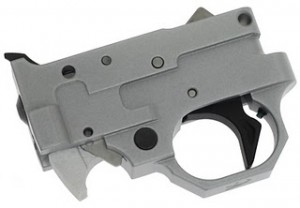Yesterday was a weak point practice day on the range, mostly focusing on one-shot draws. I think one-shot draws are one of the basic building blocks of shooting… practice them a lot in dry fire, then go to the range to verify.

I have another range session scheduled this week to work with Ruger Rimfire guns, especially my regular RRC rifle, a 10/22 Target now fitted with a set of really ugly Tech Sights so I can shoot Limited at the World Championships. I had considered building up a new rifle… you can do that with 10/22s since they don’t break the bank… but I’ve got a lot of rounds through the Target 10/22 and I’m very happy with it. As I mentioned, most of the internals are Volquartsen. Hopefully, this will allow me to focus on my Sweetie’s rifle, a very plain vanilla 10/22 I bought mega-cheaply from CDNN on their Memorial Day Sale. Assuming it groups well, the only changes will be a Volquartsen trigger group.
Otherwise, I’m hoping to get together with Marshal Halloway later this month for a mini-9mm “shoot-out.” I’ve read some interesting criticisms of the little nines lately, largely that one doesn’t “need” such a gun because of advances in .380 ammunition. Sort of sounds like me a few years back talking about .40s and 9mms. Having shot most of the mini-9mms and most of the pocket .380s, I’d say if you’re making a choice now it comes down to how well you can shoot the mini-9mms.
They are a handful, but not that much of a handful if you’re a regular shooter. By that I mean I was able to get the follow-up hits as easily with the mini-9mms as I was with the .380s. I would define a real handful as the ultralight small frame revolvers shooting .357s or some of the semiauto mini-.40s, neither of which I want any part of. Why? Because I subscribe to the lotsa bullets philosophy of life…no such thing as a one-shot stop, so I want a self-defense gun that allows me to readily deliver the necessary follow-ups.
If you don’t put a lot of rounds downrange, that’s going to push your selection criteria to the pocket .380s (or the small frame revolvers in .38, .327 or even .32 H&R. If you do put a lot of rounds downrange, check out the mini-9mms. The slightly larger polymer-framed versions (the Ruger LC9, the Taurus Slim and the Kahrs) seem to me to shoot a tiny bit lighter than the Kimber Solo, which is truly pocket-sized, but I haven’t had any problems shooting the Kimber, either.
Again, I don’t usually do ammo tests…there’s always something that a semiauto won’t shoot. Over the many decades I’ve been testing guns, I’ve managed to accumulate a lot of weird ammo, and some of it would choke a single-shot T/C! In the case of 9mm, I have found the Fiocchi 147-gr truncated cone 9mms, won’t run in a lot of guns, including my BHP. But so what? The stuff shoots amazingly well in a Para LTC lightweight commander. All I’m looking for is will the gun run with ball and a couple of different rounds of my favorite self-defense ammo (Corbon and Hornady are the usual choices). And yes, different ammo does group differently, but that difference is usually pretty small if you stay within a reasonable sample…for example, 9mm defensive ammo, 115 grains. And I’m not looking for competition accuracy out of a pocket self-defense gun. Sometimes you’ll get it…Walt Rauch once told me that a Taurus 9mm I-frame revolver he’d gotten for T&E was the single most accurate small frame revolver he’d ever shot, and he’s shot a bazillion of the things. It happens. But little bitty groups is not why one carries a pocket pistol.
